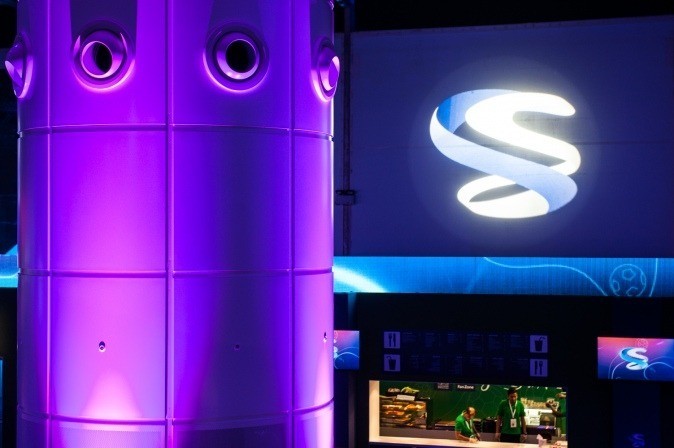.jpg)
_1-itok=GFMKQ6A9.jpg)
Germany were on fire the night they put seven goals past hosts Brazil to book their place in the 2014 FIFA World Cup™ Final, with every shot seemingly finding its way into the back of the net. Markus Pelz couldn't have been any cooler watching the 'Nationalmannschaft' make history from the comfort of the Fan Zone designed to help Qatar develop the cooling technology for the 2022 FIFA World Cup™.
Pelz is the German engineer responsible for producing and assembling the cooling columns used at this year's successful Brazil 2014 open-air Fan Zone. Watching Joachim Loew's side cruise through to the final should have been the highlight of Pelz's evening – instead the biggest thrill he got was witnessing hundreds of people enjoy the cooling technology he helped develop in the middle of a hot summer evening.
"This summer I watched the 2014 World Cup semi-final Germany against Brazil in the cooled fan zone in Doha, and it was a great experience. Obviously as a German the game itself was also great, but the experience of sitting in a very pleasant, cooled area with the big LED screens was something special," said Markus Pelz, of German company Strulik GmbH.

Talking to www.sc.qa, he labelled the project 'the first of its kind' and explained how his company had worked together with the Supreme Committee for Delivery & Legacy (SC) and the British company Arup to implement the innovative technology.
"The pieces we provided delivered the cool air into the space. The dimensions and amounts of air were unparalleled to anything we have done previously. We were impressed and delighted that it worked so well. It was a special case, and we did not have something similar in our projects before. Even though we have worked on major airport projects in the UK and Oman, this was something new. It is the first time that such a concept was implemented."
Pelz initially started working on the project late last year, at a time when Germany still had three stars on their shirt, some six months before their fairytale run in Brazil. Working in collaboration with two British companies, the cooling columns were initially developed on the computer before being constructed in Duisburg, located close to Duesseldurf in the football-crazy 'Ruhr' area of Germany.
"First we had the 3D design on the computer. We worked on the roof with the British company Fabric Architecture, and once it was approved by Arup we went ahead and started with orders in January, followed by the production in February in Duisburg. We then put the cooling columns into trucks and sent them to the port in Belgium. From there they were shipped to Doha, where we overlooked their assembly starting in May."
The Brazil 2014 Fan Zone was a great success, with over 10,000 spectators visiting the location at Katara in Doha.

Her Excellency Angelica Schortus the German Ambassador to the State of Qatar, was also impressed by the cooling technology this summer as she joined over a thousand fans at the Brazil 2014 Fan Zone to watch Germany's 1-0 quarter-final victory over France. Ambassador Schortus said: "It's my first time at the Fan Zone and there is a fantastic atmosphere with great activities and entertainment. The outdoor cooling is great and I'm sure it will contribute to a great tournament in 2022."

The open-air Fan Zone was utilized to test the cooling technology which is part of the SC's research and development plans in the lead up to the 2022 FIFA World Cup Qatar™. Results from the cooling technology testing showed temperatures on average 12 degrees Celsius lower inside the Fan Zone than outside.
Looking to the future, Pelz said that the technology developed at the Brazil 2014 Fan Zone could create an emerging industry sector in other countries with similar climates.
"The functionality of the technology works, so of course it can be implemented in other countries. We had a very positive partnership with the Supreme Committee. This was a new client for us, but we had a great experience and we hope that this can become a new sector in which we can bring to use the experience we gained in this project. It was something very special to work with the organisation delivering the infrastructure for the FIFA World Cup in Qatar, both as a football fan and an engineer."

_0.jpg)